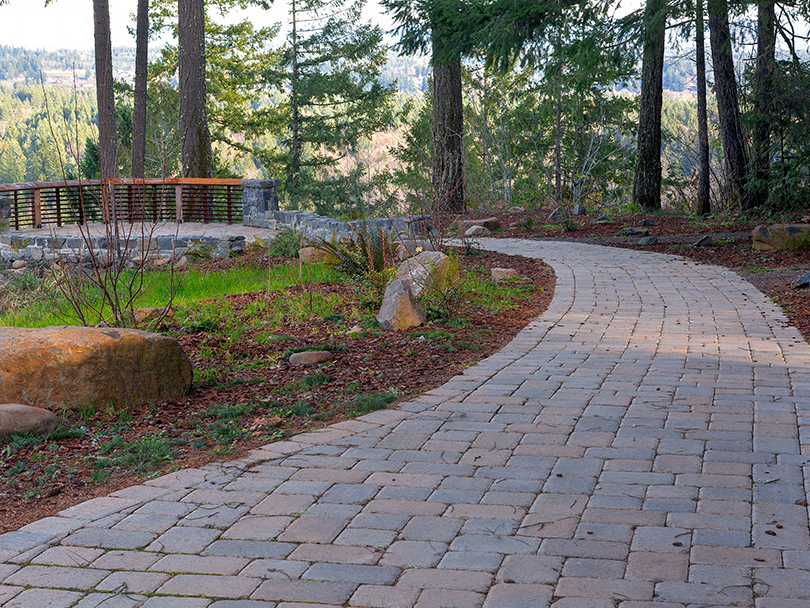By Vicki Spencer, Master Gardener
Last year Colorado had an historic wildfire season with fires burning into October and beyond — a time when our thoughts typically turn to snow. Not only has the fire season lengthened, but the average burned area has also tripled over the past few decades. Unfortunately, the threat of wildfires will continue to grow as more people are drawn to previously uninhabited areas. To protect your family and community, it’s important to know how to create defensible space.
This involves planning and designing areas around your home to serve as barriers that prevent fires from spreading and to allow access for firefighters. Defensible space doesn’t mean your yard must be completely devoid of vegetation. It simply means being strategic about your landscape.
One goal in creating defensible space is to add “hardscapes,” which break up the continuity of growth around your yard and establish buffers between buildings and vegetation. You can add hardscape by placing stone pathways close to your house and weaving them throughout your lawn and gardens. Meandering pathways don’t just create distance between flammable areas, they add interesting aesthetics.
Another goal involves placement and selection of vegetation that avoid fueling fires. Examine areas bordering your buildings. Are flammable materials and vegetation at least 3 to 5 feet away? If your border garden is mulched with wood chips, replace this mulch with flame-resistant landscape materials, such as gravel and stone. If bushes are right next to the house, move them a foot or two farther away. Better yet, reduce fuel by replacing bushes altogether with less flammable ground cover. Many ground covers do well in Colorado. Sedum is an excellent border plant with its variety of colors and blooming seasons. Ice plant (Delosperma) is also a hardy perennial with daisy-like flowers that add splashes of color to drier garden areas.
You can prevent flame transfer by keeping plant clusters and trees horizontally and vertically spaced from one another. Plant trees a safe distance from buildings and keep branches trimmed a minimum of 3 feet away. Thinking vertically, don’t forget to trim bottom branches 6 to 10 feet above the ground. If you are on a slope, these distances may need to be increased since fire travels faster up slopes.
When selecting trees, choose ones with smooth bark and low resin and sap content that shed minimal amounts of leaves and waste. Avoid pines, which create highly flammable dry litter when needles drop and collect below. When selecting fire-resistant plants, many recommend native species. This is because natives have adapted to survive the extreme heat of Colorado’s wildfires. For example, buffalo grass is among the first plants to regenerate after a fire and its early emergence helps reduce erosion. If you have a lawn, keep it mowed and irrigated, paying heed to the wise use of water.
These measures can lessen the threat of fire damage to your property. For more information about defensible space, visit nfpa.org and click on Firewise USA®.
Gardener Vicki Spencer has an eclectic background in conservation, water, natural resources and more.

